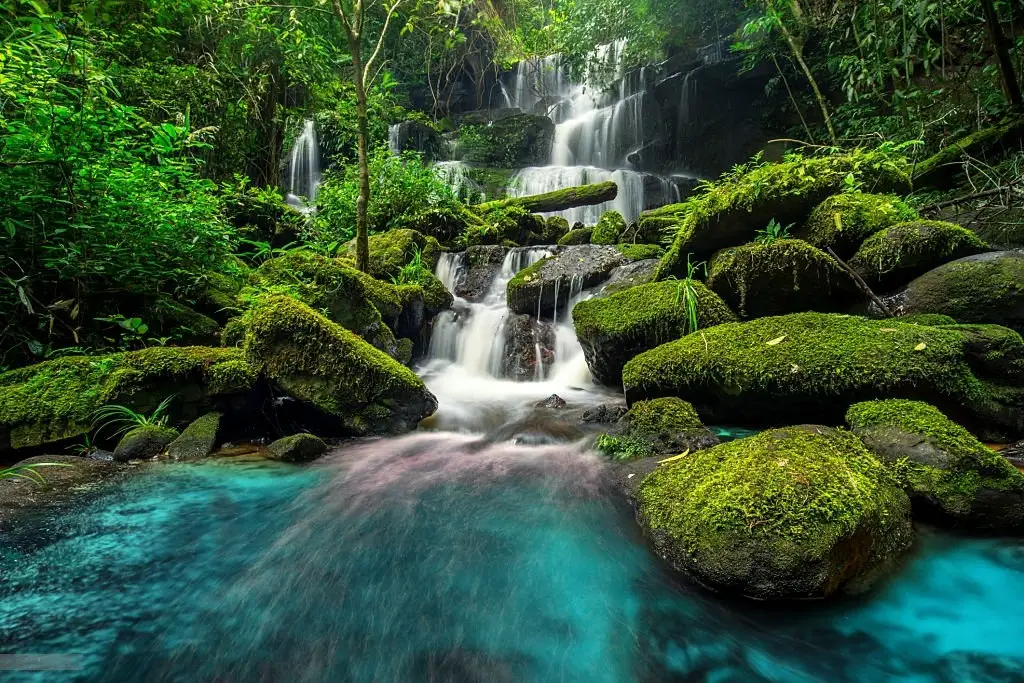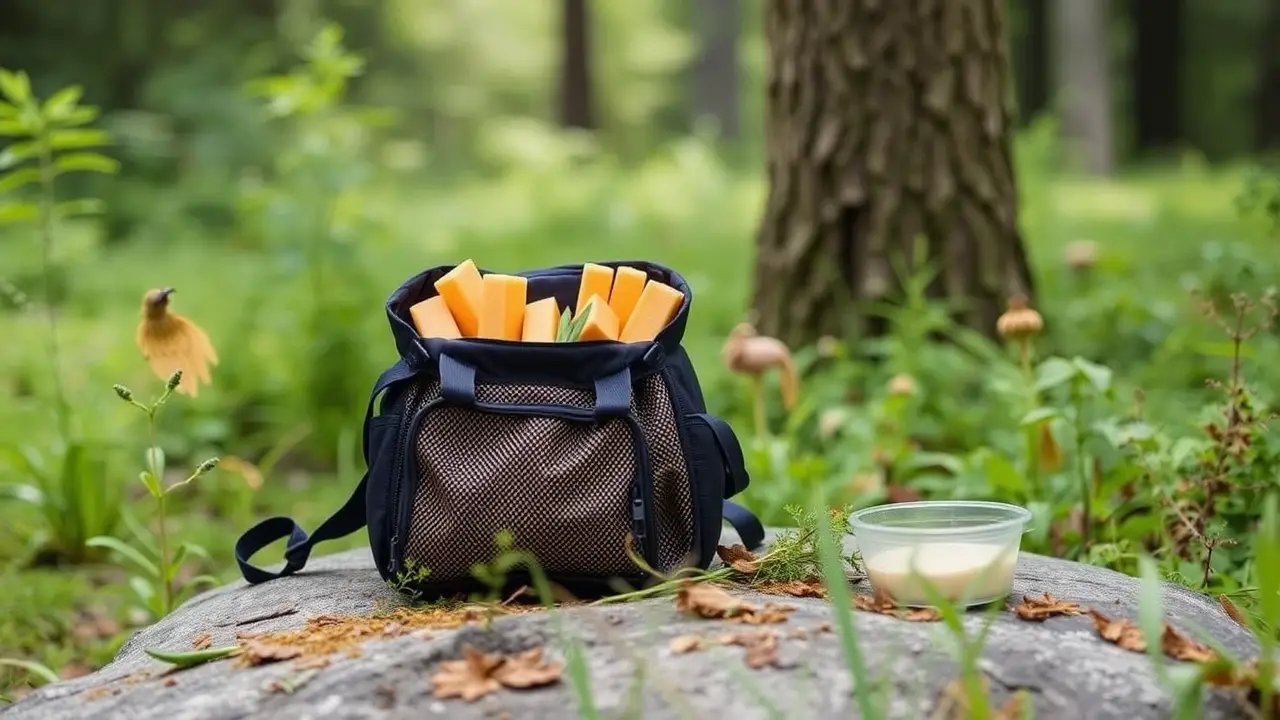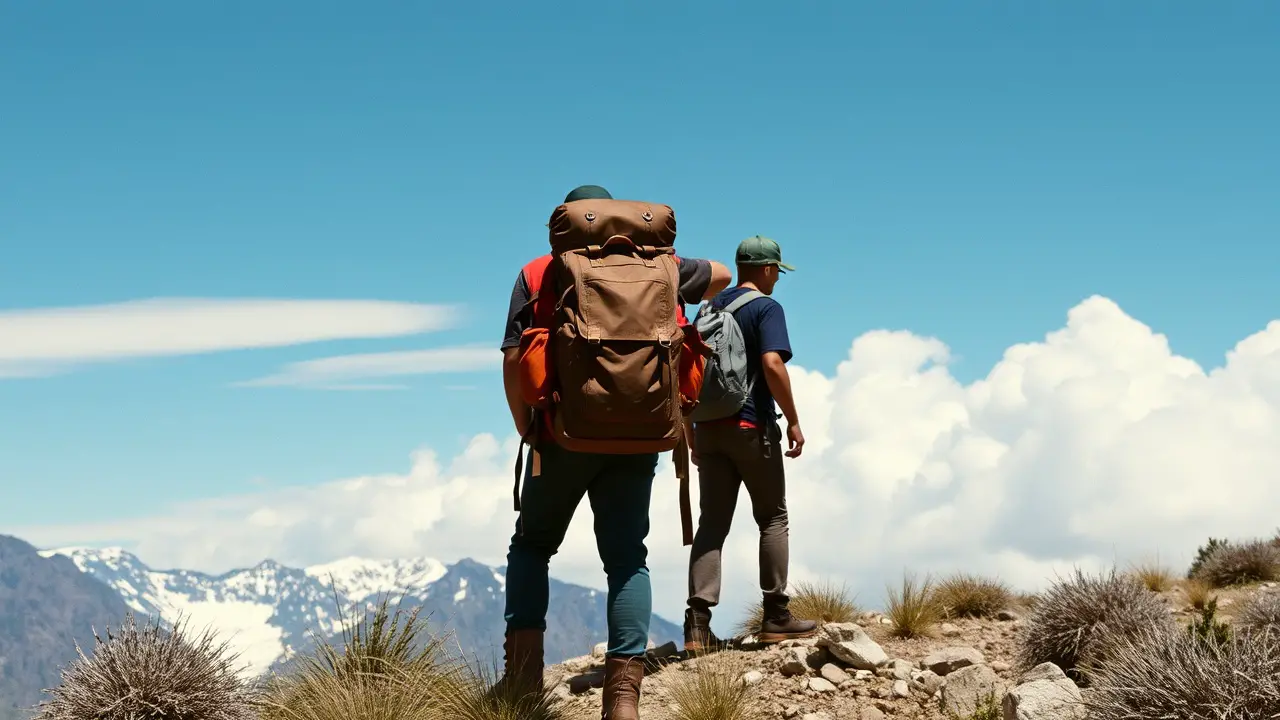Waterfall in Mexico. Waterfalls are one of the most beautiful sights on Earth, and Mexico is home to some of the most incredible ones. Here are 10 of the best waterfalls in Mexico that you need to see.
Contents
There are many beautiful waterfalls in Mexico. Some of them are hidden in the mountains, and you will have to look pretty hard to find them. Others are situated close to hotels, restaurants, or other tourist attractions.
They are all surrounded by stunning nature that you can enjoy even if you don’t want to go near the waterfall itself. Located in the heart of Mexico’s Sierra Madre mountain range is a hidden gem known as Misol-Ha.
No, it’s not a town, but the name of the beautiful waterfall you see here. This area is 17 miles southwest of Patralvillo de Ordaz, Veracruz, and just 35 miles outside of Orizaba.
The last time I visited this place was 26 years ago, when my family and I were hiking the Great Gorge route. It was worth returning for this magnificent sight.
Waterfall in Mexico
Waterfalls are formed through a process of erosion. Waterfalls are the king of all water attractions, and they are one of the most beautiful places to visit in Mexico. There are many types of outpourings in Mexico, and the most common ones are:
Waterfall in Mexico: El Paraso Waterfall
El Paraso Waterfall is a outpouring located in Mexico that falls from a height of about 50 meters. This waterfall is famous for its beauty and amazing views.
Waterfall in Mexico: Cascada de la Virgen
Cascada de la Virgen is another beautiful waterfall found in Mexico and has a height of 25 m.
The name of this waterfall comes from an old legend that says that there was once a princess who fell into the river while walking through the forest, but no one saw her fall or heard her scream.
She was never found again, and people believe that she was turned into stone while trying to escape from her father’s castle because she didn’t like him anymore.
Read more articles: Taking Fresh Eggs Backpacking
List of the most popular waterfalls
- Basaseachic Falls
- Cascada de Basaseachi
- Novia’s Velo Cascade
- Cascada de Micos
- Cascada de Agua Azul
- Cascada Cusarare
- Cascada Tamul
- El Chiflón Cascadas
- Salto del Nogalito
- Santa Maria River Waterfall
1. Basaseachic Falls
Basaseachic Falls are located in the Sierra Tarahumara mountain range in Chihuahua, Mexico. It is an 829-foot waterfall and part of the Biosphere Reserve. It is the second-highest waterfall in Mexico and a very popular tourist attraction.
The waterfall is so tall that it creates a rain curtain, which can make it hard to see the top of the outpouring. The falls are located in a deep canyon, which makes them seem even larger than they actually are.
The waterfall has two sections, each with a different name. The first section is called “Tres Peces,” which means “three fishes” in Spanish.
It is the lower part of the falls, and it has three small drops. The second section is called “El Salto del Teufel,” which means “the Devil’s Leap” in English.
It is the upper part of the falls, and it has one large drop. The falls are surrounded by pine forests and mountains. There are also two rivers that feed into the waterfall: the Rio de las Vacas and the Rio San Juan.
Tres Peces is the lower part of the falls, and it has three small drops. The first drop is only about 10 feet high and sits in front of a large rock formation. The second drop is about 20 feet tall, and it flows into a deep pool at the bottom of the canyon.
The third drop is about 40 feet tall, and it flows over a rock formation into another deep pool. The second section of the waterfall is called “El Salto del Teufel,” which means “the Devil’s Leap” in English.
It is the upper part of the falls, and it has one large drop. The falls are surrounded by pine forests and mountains. There are also two rivers that feed into the waterfall: the Rio de las Vacas and the Rio San Juan.
Read more articles: Can You Take Eggs Backpacking?
2. Cascada de Basaseachi
The second-most beautiful waterfall in Mexico is located in the state of Chihuahua, Mexico. It’s also known as Basaseachic Falls and is located in the Sierra Tarahumara mountain range.
The waterfall has an average height of 90 meters (295 feet) and a width of 30 meters (98 feet).
The outpouring is a popular tourist attraction, especially during the rainy season when it’s at its highest. The name “Basaseachic” comes from the Tarahumara Indian language and means “base of the snow-covered
The outpouring is located in a canyon around 3,400 meters (11,153 feet) above sea level and has two separate ravines that join together in a cave. The water flows down from the cave to form the waterfall.
The water isn’t always blue, but it’s usually a beautiful shade of green. The reason for this is because the water contains high levels of copper sulfate and other minerals that give it a unique color.
The Basaseachic Falls are a popular tourist attraction in Mexico, especially during the rainy season when they’re at their highest. The waterfall has an average height of 90 meters (295 feet) and a width of 30 meters (98 feet).
3. Cascada Velo de Novia
Located in the state of Chihuahua, Mexico, Cascada Velo de Novia is a waterfall that flows into the river Bavispe. This stunning natural wonder has been dubbed “The Bride’s Veil” and is one of the most beautiful waterfalls in Mexico.
The outpouring is located in a canyon and is fed by melting snow from the mountains above. The large amount of water that flows into this canyon makes it a stunning example of how beautiful nature can be.
The waterfall is in the Sierra Tarahumara mountain range, which is known for its stunning beauty and rough terrain.
The water flows from a snowpack on the mountains above into a narrow canyon that opens up into an impressive pool of water at the base of the falls.
Read more articles: How to Pack Eggs for Backpacking?
4. Cascada de Micos
Located in the state of Zacatecas, this waterfall is formed by a river called the Micos. Before it gets to where it’s going, the stream flows over a rocky bed and forms several waterfalls.
The river flows from north to south and falls from an elevation of 3,000 meters above sea level down to 1,200 m (3,900 ft).
It takes about two hours each way for hikers to reach the waterfall using their own transportation or by hiring a guide who has access to 44 vehicles.
The area around the outpouring is filled with lush vegetation and wildlife. Visitors can see butterflies, hummingbirds, deer, and raccoons. There are also many different types of flowers blooming throughout the year.
In addition to visiting during the summer months, when most tourists are there, it’s a good idea to make reservations well in advance because weekends fill up quickly.
Hiking to the waterfall is a popular activity for both locals and visitors. The trail begins at the end of Avenida Morelos in the city of Zacatecas and leads into the mountains.
It’s about a two-hour walk from here to the base of the falls. Visitors can continue walking for another hour or so before reaching their destination.
The hike is moderate in difficulty and takes about two hours each way.
It’s a good idea to wear comfortable shoes or hiking boots and bring plenty of water. There are restrooms at the base of the waterfall but no concessions such as food or drink.
5. Cascada de Agua Azul
Cascada de Agua Azul is a waterfall in the Sierra Madre Occidental mountains of Mexico, located in the municipality of Mazapil, Durango. It has become one of the most popular tourist attractions in this area due to its scenic beauty and ease of access.
The waterfall is located at the end of a series of cascades and pools, which are accessed by walking through a canyon that has been cut into the rock.
The water flows from the Sierra Madre mountain range, which has an average height of about 1,000 feet above sea level. This height allows for an abundant supply of water to flow down into the canyon during the rainy season.
The water flows from the Sierra Madre mountain range, which has an average height of about 1,000 feet above sea level. This height allows for an abundant supply of water to flow down into the canyon during the rainy season.
Read more articles: How to Backpack with Eggs?
6. Cascada Cusarare
Cascada Cusarare is located in the state of Michoacán and is only accessible by boat. The falls are 120 feet high, and they drop into a deep canyon with boulders that make it hard to dive into the water.
This waterfall is located on a private property called El Capricho de las Nubes, which translated means “the caprice of clouds.” Visitors can take photos from outside the gate entrance.
It’s worth noting that you should ask permission before taking photos if you’re not staying at one of the nearby hotels or restaurants on site.
The falls are part of an ecotourism project created by Grupo Cusarare S.A., a company based in Mexico City that focuses on projects that improve communities through sustainable development.
through sustainable tourism activities such as hiking trails and ecological tours for tourists coming from all over the Mexico City area or abroad in countries like Brazil too!
The municipality where Cusarare Waterfall is located has been recognized nationally as having many important historical sites dedicated mainly to the Spanish colonization period.
During this period, Europeans arrived with the intent of colonizing parts of South America, including what is now known as the United States.
7. Cascada Tamul
Tamul is one of the most beautiful waterfalls in Mexico. Located in the state of Durango, it’s one of the tallest waterfalls in the country.
The waterfall is located within the Sierra Madre Occidental mountain range, and it’s located within its own municipality, which is named San Juan de Sabinas, Durango.
Getting to this place requires a bit more than just a car ride because you will have to hike for about an hour before reaching it.
Even though there are other waterfalls near this one, Tamul still stands out because it offers a unique view with no other nearby attractions except for another waterfall that’s smaller than it but still pretty amazing too!
The waterfall is also known as “Tamul,” which is a Nahuatl word that means “place of the snake.”
It’s one of the most beautiful waterfalls in Mexico, and it offers a unique view with no other nearby attractions except for another waterfall that’s smaller than it but still pretty amazing too!
Read more articles: Best Texas State Parks for RV
El Chiflón Cascadas
The Cascadas El Chiflón is a waterfall located in the state of Jalisco, Mexico. It is located in the municipality of Tequila, in the Tequila Volcano National Park. The waterfall is formed by the Tequila River and has an elevation of 1,375 meters above sea level.
Cascadas El Chiflón is part of a series of waterfalls that start at the top of Tequila Volcano and descend over 3 kilometers to where they meet another stream before flowing into Lake Catemaco.
The waterfall is fed by rain and melted snow from the Tequila Volcano and can reach up to 50 meters in height during the rainy season. It is also possible for visitors to walk behind the waterfall, which takes about 20 minutes and requires some climbing over rocks.
The waterfall is accessible by car from the Tequila town center. Visitors can park near the entrance and then walk about 10 minutes to reach it.
The waterfall is open daily from 8 a.m. to 5 p.m., with entrance fees of $200 pesos for adults and $100 pesos for children aged 6 to 12 years old.
9. Salto del Nogalito
Salto del Nogalito is one of the most beautiful places you can visit in Mexico. The waterfall is located in El Parque Nacional Barranca de Cupatitzio, and it is about eight miles from the city of Querétaro.
It was formed by the combination of three major rivers: the Rio Michoacán, the Rio Grande de Santiago, and the Rio Panuco.
Visitors may enjoy hiking trails that allow them to see some areas with more than 2000-meter-high cliffs as well as waterfalls such as Salto de Cinco Picos and Salto del Rincón (which is also known as Salto del Alambre).
This place has great natural beauty, so you should stay there at least one day to explore all its attractions.
If you are a lover of nature, then this place is perfect for you. You will have the opportunity to see a variety of flora and fauna as well as enjoy breathtaking views.
The park has several trails of different lengths, so if you want to explore everything that this place has to offer, it is recommended that you stay there at least one day.
Read more articles: Seattle to Yellowstone Road Trip
10. Santa Maria River Waterfall
Santa Maria River Waterfall Where: Near the town of Santa Mara del Oro, in Los Cabos, Mexico. What makes it special? Not only is this waterfall beautiful, but it also has a history that dates back to pre-Hispanic times.
The nearby town of Las Gaviotas was named after a group of seabirds called gaviotas (“seagulls” in Spanish), which were regularly found flying over the falls.
People in the area used to hunt these seabirds for food until they went extinct in the middle of the 19th century. They nested in large numbers on an island near the waterfall.
Today, Las Gaviotas receives visits from tourists who want to see both the waterfall and its namesake birds; however, there are no longer any gaviotas here!
How do I get there? To reach Santa Mara River Waterfall from Cabo San Lucas, take Highway 19 South towards La Paz for about 45 minutes until you reach Highway 21 North (towards San José del Cabo).
Follow this road for about 15 minutes before turning left onto Calle Juarez (which will eventually become Calle Madero).
Continue along Calle Madero until you reach Highway 1 Sur, which runs parallel with Playa Maderas Beach and comes from behind your right shoulder;
At the corner of this main road and Calle Madero, turn right onto this main road by crossing over two lanes of traffic on what looks like a dirt path but isn’t marked and stays that way until you reach another paved road.
turn left onto this new paved street leading directly into downtown Santa Maria Del Oro, at which point signs indicate that one only needs to follow them all the way through town—eventually arriving at their destination!
How long does it take to get there? The drive from Cabo San Lucas to Santa Maria Del Oro (the most direct route) should take about 75 minutes. If you are traveling by bus, the trip will take approximately 2 hours and 15 minutes.
Conclusion
Waterfalls are a great and beautiful site to visit in Mexico during the summer. There are many waterfalls to choose from all around Mexico, where you can find fresh air, cold water (depending on the season), and natural features that will delight you while you travel.
For those who love canyoning or rock climbing, this is a place where it is even possible to combine both simultaneously. What could be better?
We hope you have enjoyed our list of the top 10 waterfalls in Mexico. If you are looking for more to explore, we suggest checking out our article on the 5 Natural Wonders of Mexico, which also includes some great destinations!
Read more articles: Snakes in Spain











Leave a Reply